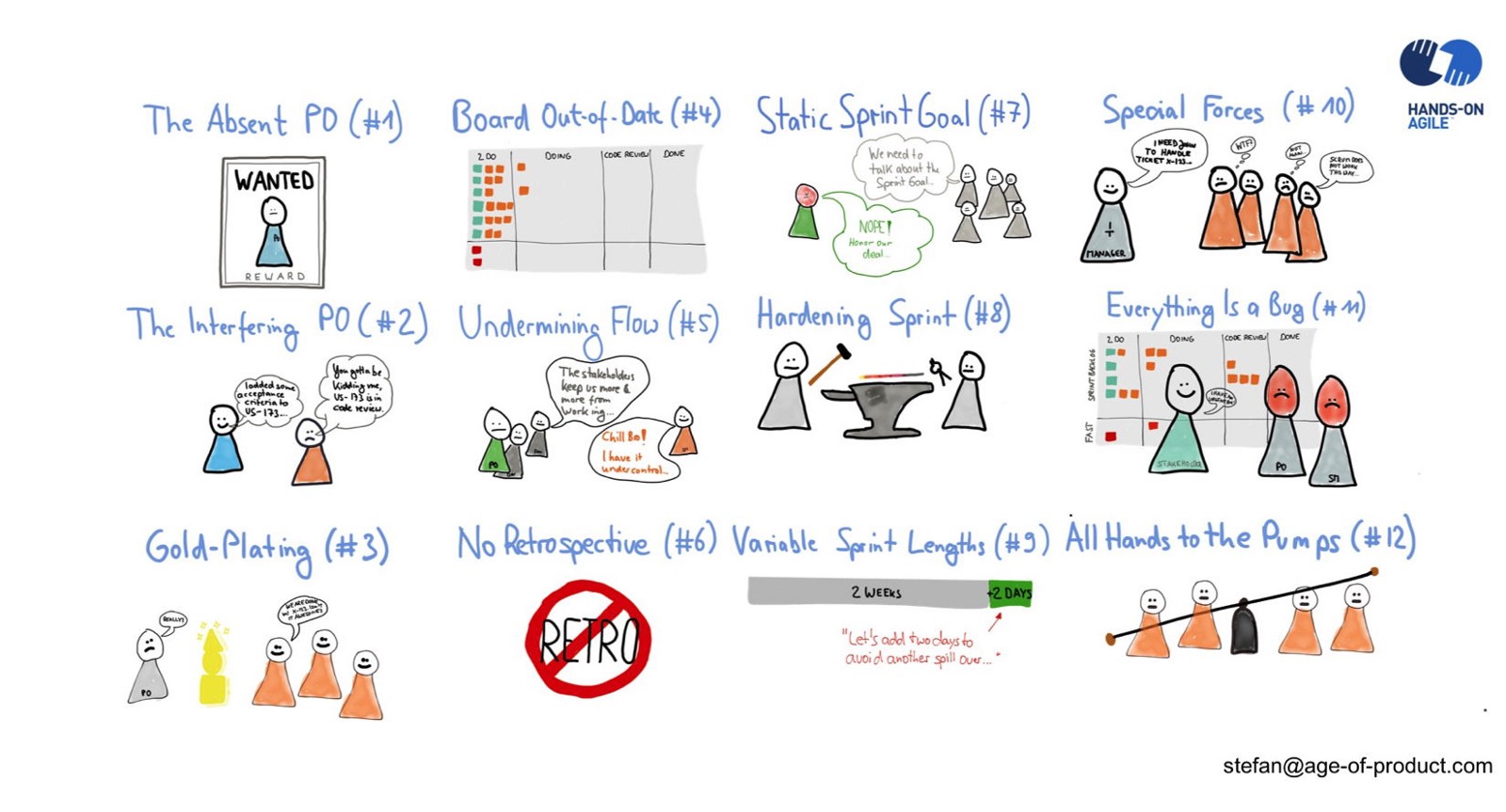
What you do NOT need to do in Scrum!

I often hear discussions asking who is performing the traditional product leader tasks in Scrum.
This is in general an excuse to state that Scrum alone cannot work and classical product leaders are still necessary.
I encourage you to classify these so-called regular product manager activities. Often these jobs are plain reporting progress to various boards and micromanaging the development team.
I truly acknowledge the importance and value of a line manager caring for his collaborators and nurturing the success of the products they develop.
But to be honest, these activities are implemented by good people and technical leaders and almost never by some product managers.
Below a list of tasks you do NOT need anymore to do in Scrum.
-
Make commitments on behalf of the team about how much they can get done by a certain date or estimate effort for the team.
-
Coerce the team that the commitments made on their behalf are attainable.
-
Coerce the team to change their estimates.
-
Give a direction to the team on how to implement the work.
-
Monitor the team’s progress to make sure they stay on schedule.
-
Step in and determine the solution.
-
Conduct weekly status update and face-to-face meetings with the team to surface issues and provide a direction.
-
Provide motivation and push the team to work harder than they might want to use carrots and sticks.
-
Decide task assignments among the team members and follow up on tasks to verify completion. Force them to work during weekends.
-
Be responsible for the team doing the right thing at the right time in the right way.
-
Update Gantt charts for the iteration and release planning.
-
Finding out those requirements means explaining to team members what they should implement.
-
Review the documents and code to guaranty quality.
-
Explain upper management why the product is late and why you need additional resources.
-
Explain upper management why you cannot transfer a team member to another product.
-
Attend weekly progress and escalation meetings to explain in detail the status of your product.
-
Define the priority of the next activities.

The above Scrum anti-patterns picture shows more common misunderstandings about the Scrum framework.
As a Scrum practitioner, you should regularly read material, attend formal training, and seek advanced certifications.
You, as Scrum master or agile product manager, have to perform important and useful tasks:
-
Help to remove impediments to increase the velocity of a team.
-
Coach the team to implement Scrum and reflect on their activities.
-
Plan-Do-Check-Adapt Plan Do Check Act principle is built into Scrum with retrospectives and sprint reviews.
-
Coach product owner to deliver a groomed and refined backlog.
-
Inform and support all product’s stakeholders.
-
If you reflect on these two lists, it becomes obvious that the first list describes malfunctions and the second one describes mechanisms how to improve continuously - lean principles -.
Jeff Sutherland gives some interesting insights about the Scrum master
-
The Scrum master enforces Scrum practices Coaching rather than command and control
-
The Scrum master effort is
-
Few problems: for a small team 10%, for a large team, 50% of your working time.
-
Many problems: for a small team 50%, for a large team, 100% of your working time until the team reaches flow status
-
A Scrum master is a change agent and supports the organization to becoming more agile.
-
I experimented with the Scrum master being part of the team, or Scrum master working for multiple teams. Experience has shown us that the full-time Scrum master is more effective.
And the LeSS framework has a clear rule about product managers.
Remarks
For all Project Management Institute PMI fans, the institute acquired Disciplined Agile Delivery DAD in 2019. The PMI-ACP is working on integrating agile approaches into the official PMI approach.
An official definition of Scrum and the responsibilities of the team, product owner, and Scrum master are documented in Scrum.
The agile alliance provides a glossary of agile terms.